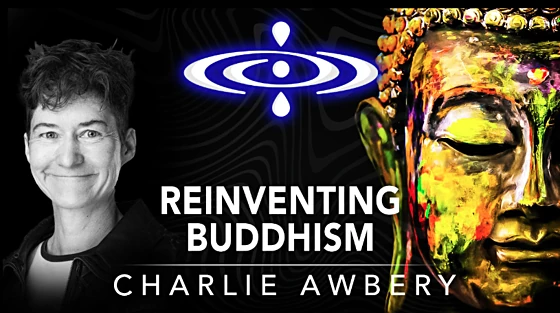Artem Zen interviewed me on the difference between meditation in renunciative disciplines and integrative systems. We cover identity, historical developments, what the Evolving Ground community of contemporary Vajrayana practice is up to, teaching challenges, and creating electrifying and meaningful group rituals.
The podcast episode is 1 hour 40 minutes. Thank you to Dan Garfield for his work on this page and the detailed timeline below.
Content and Timeline
0:00 Intro
02:20 Discussion of different paths, sutra vs. tantra, Vajrayana influences on contemporary Western teachers
04:10 Charlie’s early days as a practicioner, encountering Vajrayana, discussion of the Vajrayana schema (Sutra, Tantra, Dzogchen)
07:50 Personal identity in Sutric vs. non-Sutric paths
10:15 Discussion of the various yanas (vehicles), and the relationship between them; also the three foundations of practice in Evolving Ground: receptive presence, ethical maturity, and personal autonomy
17:15 Introspective vs. extrospective, eyes closed vs. eyes open meditation
20:36 The importance of language and how language influences your relationship to meditation practice
22:22 “We’ve inherited a kind of perfectionism, a kind of renunciative view” that is embedded in our culture
26:00 How did Vajrayana view develop from the earlier Sutric (renunciative) view?
29:45 Sutric view can be problematic for non-monastics
33:20 “In Vajrayana the function of retreat is SO different…”
35:03 Are different paths better suited for different personalities?
40:00 Is it possible to pursue a renunciative path while still being engaged with the world?
45:15 Vajrayana is characterized by spontaneity (as opposed to the gradualism of most Sutrayana)
48:36 The Vajrayana view of “enlightenment”
53:01 “There’s a Sutrayana from the Sutrayana view, and there’s a Sutrayana from the Vajrayana view”
59:40 “Western” dogmatism vs. “Eastern” pragmatism, the cleaned-up rationalized presentation of Buddhism in the West
1:01:47 “What are you trying to create with Evolving Ground?”
1:03:40 An example of how contemporary Vajrayana is different from traditional Vajrayana
1:12:30 What is a chöd ritual like?
1:16:00 The value of a community for developing practices; silent sitting as a foundation for practice
1:21:00 Relating to emotions in practice
1:22:40 “What are some of the greatest challenges you’ve experienced with teaching?”
1:30:11 Tacit knowledge transmission, learning by relationship rather than study
1:36:53 The electric atmosphere of group ritual
References
Evolving Ground’s Opening Awareness book has practical instructions on how to establish a meditation practice or transition to opening awareness from other types of meditation.

